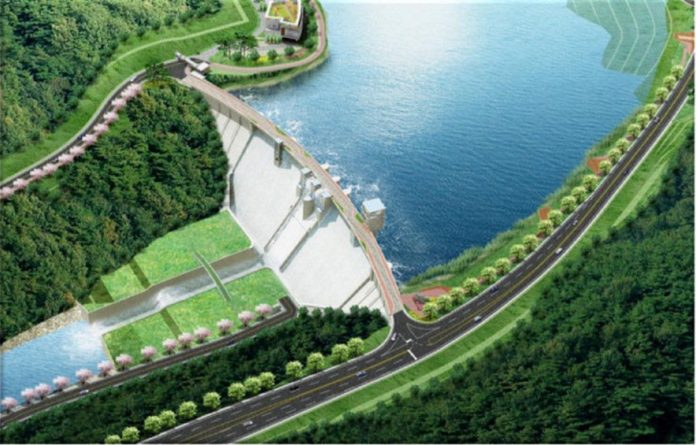
ILOILO City – The region’s “saving grace” was how a local official described the agriculture sector amid the coronavirus pandemic.
Based on the Philippine Statistics Authority’s (PSA) 2020 Report on the Economic Performance, from a .5 percent performance in 2019, the Agriculture, Forestry, and Fishing (AFF) sector has grown by 6.2 percent in 2020, the only major sector in Western Visayas that posted positive growth despite the pandemic.
According to National Economic and Development Authority (NEDA) Region 6 officer-in-charge Meylene Rosales, the agriculture sector is the region’s saving grace during this pandemic.
“Nagbagsakan na at lahat but agriculture stood out,” she said.
MORE SUPPORT
For Rosales, the AFF growth signals the government to provide more resources to the agriculture sector.
“It is high time na pag-tuonan natin ng pansin ang agriculture sector. Although this is not to say that we have not been paying attention to the agri sector pero seguro ang kailangan is dagdagan pa,” she explained.
For one, Rosales cited what is already in place – the Rice Tarrification Law.
“The law is supposed to bring in more players to the rice industry to help bring down the selling price para ma-afford ng lahat,” she added.
She is hopeful that by 2022, the agriculture sector will be given a bigger budget.
According to PSA-6 director Fred Sollesta, Region 6 has the fastest growth in AFF among the regions in the country.
JALAUR DAM TO BOOST AGRI
The agriculture sector in the region is expected to further thrive once the P11.2-billion Jalaur River Multi-Purpose Project II (JRMP II) is completed.
Stressing the impact of the agriculture sector to the economy, Ilonggo senator Franklin Drilon, during the groundbreaking of the project last year, said the construction of JRMP II could very well help in improving agricultural production in Western Visayas and in the country, in general.
“I hope that the administration would really prioritize the construction of agricultural facilities similar to Jalaur in its Build, Build, Build program, because only then we will be able to move closer to our goal of rice self-sufficiency, improve our overall agricultural production, and ultimately bring development to rural areas, while helping address problems of poverty and food security,” Drilon stressed.
Drilon said even Iloilo, which is considered the food basket and rice granary of Western Visayas, also experienced decline in agricultural outputs.
From a growth rate of 17.9 percent in 2010 to 2011, agriculture in Western Visayas contracted in 2014 to 2016 with successive negative growth rates of 1.8 percent and 0.5 percent. It was only in 2016 to 2017 that it rebounded to 10.8 percent.
Hence, Drilon said the “game-changer” JRMP II has the capacity to augment agricultural production and stimulate agri-industrial activities, not only in WV but throughout the country.
“Our goal in pushing for JRMP II is to be able to provide year-round irrigation to 31,840 hectares of farm lots in the Province of Iloilo, so Iloilo, and the whole of Western Visayas, can become the country’s rice granary once more,” Drilon said.
JRMP II, the first large-scale reservoir dam outside of Luzon, will contribute to the country’s rice production target of 7.6 percent. It will increase annual production of rice to 300,000 metric tons from 140,000 metric tons in Iloilo.
JRMP II includes the construction of 109-meter Jalaur high dam, 38.5-meter afterbay dam, 10-meter Alibunan catch dam, 80.74-kilometer high line canal; generation of new areas for irrigation; and rehabilitation of existing irrigation system.
REGION’S ECONOMIC GROWTH IN 2020
Generally, Rosales said, the region’s economy in 2020 contracted by 9.7 percent from its 6.3 percent growth in 2019.
The economic performance of the region is measured from the perspective of producers of goods and services through the gross regional domestic product (GRDP) as well as the expenditures of the residents of the region using the gross regional domestic expenditure (GRDE).
From being consistently strong for three consecutive years from 2016 to 2019, Region 6’s economy slumped in 2020.
Sollesta said the services sector, which accounted for 58.9 percent of the total economy, slowed down with its negative 14.3 percent performance from its eight percent growth rate in 2019.
Of its 11 sub-industries, the financial and insurance subsectors grew by 3.3 percent, public administration with its 3.9 percent, and information and communication with its 3.7 percent posted a positive growth performance last year.
The industry sector, with a 21.3 percent share in the economy, shrunk to negative 8.9 percent from its 6.1 percent growth in 2019.
All its sub-industries namely manufacturing, construction, mining and quarrying, and electricity, steam, water, and waste management posted negative growth.
The total economic gross value added of the region, he said, was at P825.4 billion, a decrease of P8.5 billion from the PHP913.9 billion in 2019. It was also the lowest since 2017.
In terms of GRDE, only the government final consumption expenditure grew faster by 8.1 percent from the 7.5 percent in 2019.
The contraction was recorded in household final consumption expenditure at negative 8.5; gross capital formation, negative 28 percent; exports of goods and services, negative 38.8 and import of goods and services, negative 17.5 percent.
“Of the 9.6 percent decline in the GDP (gross domestic product) of the country, Western Visayas was the fifth negative contributor with negative .5 percentage point and accounting for 4.7 percent share to the national GDP,” he added.
Meanwhile, Rosales lamented that the COVID-19 pandemic, as expected, resulted in unprecedented health, economic and social repercussion adversely affecting all sectors of the society.
“What started as a health emergency has turned into a full-blown socio-economic crisis that unfortunately has disrupted the region’s growth trajectory,” she said.
Nonetheless, she noted that in terms of monetary value, Western Visayas still ranks as the fifth-largest economy among regions outside of the National Capital Region. Based on the growth rate, the region ranked 11th among the regions in the country./PN





